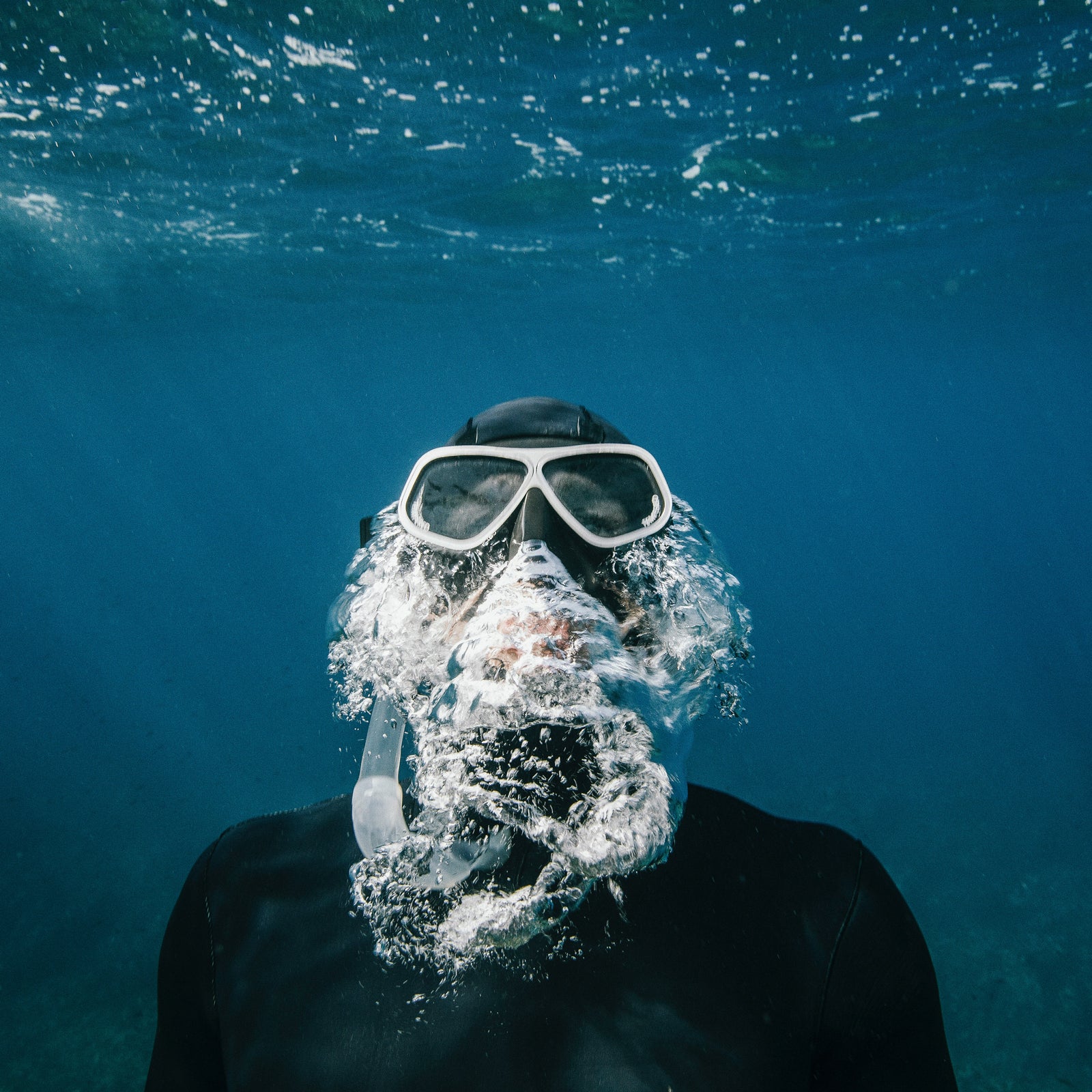In his new book╠ř╠ř($28, Little, Brown and Company), journalist╠řBill Streever says that he has an agenda, right off the bat. He wants to tempt people to go diving, to think differently about what might be happening under the waterÔÇÖs surface. ÔÇťI wanted readers to embrace the part of our world that is shrouded by depth,ÔÇŁ he writes.╠ř
The book is broadly about the science and history of underwater exploration, from 17th-century submarines to todayÔÇÖs freedivers. But Streever, who is also╠řan obsessive diver and╠řlives on a boat, drills down to the human scale, too. He starts with a gripping story of the 1960s exploration of the Marianas Trench╠řand the fear and anxiety╠řdivers and scientists felt when they tried to get to the deepest point on the planet. He explains the ways weÔÇÖve figured out how to manage╠řwater and air over timeÔÇöthe hows of deep-sea divingÔÇöbut itÔÇÖs also about the whys╠řand what drives people to push themselves farther╠řunder water.╠ř
Streever,╠řand his history as a diver, is very much a part of the story, and heÔÇÖs fascinated by the quirks and evolution╠řof the sport: how freedivers train╠řand what Aristotle thought about early diving bells. But heÔÇÖs also thinking about the future╠řand how both science and love for a place can contribute to protecting the struggling ocean. He ends the book with renowned marine biologist Sylvia Earle╠řand her plea for divers, or anyone who cares about the water, to do something about it.╠ř
StreeverÔÇÖs is one of two new books that look╠řat how recreation╠řcan translate to a deeper relationship with the sea. ╠ř($27, Penguin Random House), a memoir about fishing on MarthaÔÇÖs Vineyard from competitive surfcaster, fishing guide, and fish taxidermist Janet Messineo, also describes an obsession╠řwith unknown vastness, whether stalking striped bass or mapping the ocean floor, is the most interesting part of both books.
Messineo takes a slightly different tack to show how she developed her relationship with the ocean. While finding purpose through time spent outside isnÔÇÖt a new premise for a book, her in-depth╠řlook into the macho world of surfcasting, and how she became a part of it in the seventies, is novel. She was one of the first women fishing for stripers and other big fish╠řon the Atlantic coast, but her path there was winding and unexpected, starting with a tough, mill-town childhood.╠řA╠řtrip to California chasing LSD dealers with a bad-news ex-husband eventually brought her to the Vineyard. She shares the lifetime of early mornings it took to learn the subtleties of surfcasting,╠řthe flashes of luck involved in╠řlanding a monster fish, and how she nearly drowned╠řin leaky waders and was╠řdragged offshore by strong catches.
Casting into the Light occasionally gets bogged down in the details, but itÔÇÖs a glimpse into the╠řobsessive world of surfcasting,╠řchasing huge striped bass, and the low-key past of a now-fancy island. The best parts are when Messineo╠řgets into the tight, wild fishing community living on the margins of a resort town. The taxidermy tidbits donÔÇÖt hurt either, like asking her neighbor to fell a pigeon with a slingshot for her to practice on, and mounting╠řfish for Spike Lee.
The two books are thoughtful in different ways. Streever pulls together stories that show╠řhis evolving appreciation for the sea, to demonstrate╠řhow important and misunderstood the ocean is. Messineo twists the kaleidoscope of her own life on the shore to give a long-range view of her love for the sport and the fish and the sea. ÔÇťCome April, the first time I get my fishing rod out of itÔÇÖs winter storage and stand in surf up to my thing to cast, I exhale. I feel as though IÔÇÖve been holding my breath for the last five months,ÔÇŁ she writes. TheyÔÇÖre both about trying to understand the ocean, but they both acknowledge the catch: that we never really can.╠ř
Two More New Ocean-Oriented Books╠ř
ÔÇťWild Sea: A History of the Southern Ocean,ÔÇŁ╠řby Joy McCann
Australian environmental-historian McCann gives a of the Antarctic Ocean, the worldÔÇÖs least-known body of water. ItÔÇÖs full of polar-explorer stories and current environmental risks, and itÔÇÖs nice to feel like there are parts of the world that still hold mystery.
ÔÇťEat Like a Fish: My ║┌┴¤│ď╣¤═°s as a Fisherman Turned Restorative Ocean Farmer,ÔÇŁ╠řby Bren Smith
The ocean holds a ton of potential for sustainable agriculture, and Smith, who runs what he calls one of the first sustainable , makes a for it. He tells the story of how aquaculture pulled him away from the adrenaline of commercial fishing╠řand the role he thinks it can play in the future.


